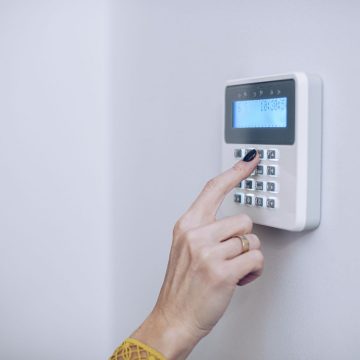
As the population ages, the concept of independent living for seniors has gained significant importance. Many aging adults wish to maintain their autonomy and stay in the comfort of their own homes, even as they encounter difficulties with daily activities. Thanks to technological advancements, it’s now possible to combine caregiving services with innovative products like cameras, and emergency response systems, allowing seniors to enjoy a higher quality of life while remaining in their cherished home environments. Today we’ll explore how these technologies can be seamlessly integrated to support aging adults’ journey towards independent living.
First, recognizing the significance of accepting assistance early in aging cannot be overstated, particularly when preventing serious falls and injuries. Embracing help at the onset of difficulties with activities of daily living ensures the safety and well-being of aging adults and acts as a proactive measure to stave off potential crises. By availing themselves of minimal caregiving services and support from caregivers, seniors can mitigate the risks of debilitating falls that could lead to more severe injuries. This foresighted approach preserves one’s physical health and safeguards the cherished independence that seniors hold dear, reducing the likelihood of prematurely necessitating greater care.
- Understanding the Challenges: Aging often brings challenges related to mobility, memory, and overall health, making it difficult for seniors to perform tasks that were once second nature. Activities of daily living (ADLs), such as bathing, dressing, cooking, and taking medications, can become hurdles. Seeking the assistance of Caregivers, whether paid or family, is critical in the early stages of decline. This is when “a little bit of help” can go a long way! You may also want to consider technology to ease worry and keep your loved ones safe.
- Smart Cameras for Remote Monitoring: Modern smart cameras equipped with motion detection, two-way audio, and live streaming capabilities can play a pivotal role in maintaining the safety of aging adults. These cameras can be strategically placed around the home to monitor activities, ensuring seniors move around safely and effectively. Family members or caregivers can access the camera feeds remotely, providing peace of mind and the ability to respond promptly to any issues. It is important to discuss the placement of cameras and choose locations that do not invade your loved ones’ privacy.
- Emergency Response Systems: Emergency response systems, such as personal alert buttons and fall detection devices, are essential for aging adults. These systems enable seniors to call for help quickly in emergencies, even if they cannot reach a phone. Some systems automatically detect falls and alert designated contacts or emergency services. By incorporating these systems, seniors can enjoy greater security while living independently.
- Virtual Assistance and Medication Management: Voice-activated virtual assistants can be programmed to offer medication reminders and appointment alerts and even initiate calls to family members or medical professionals if needed. These assistants provide a way for seniors to manage their daily routines and maintain their health while minimizing the risk of forgetting important tasks.
- Privacy and Ethical Considerations: While technology offers numerous benefits, it’s important to address privacy concerns and ethical considerations. Seniors should be involved in the decision-making process and have the ability to control the data collected by these devices. Transparency in data usage and communication can help build trust and ensure that seniors feel empowered and respected.
- Customizing Solutions: Every individual’s needs and preferences are unique. When incorporating caregiving services with technology, it’s crucial to tailor the approach to suit the specific requirement of each individual. Caregivers, family members, and seniors themselves should collaborate to design a system that strikes the right balance between support and independence.
Utilizing technology offers aging adults a renewed sense of security, empowering them to maintain their independence while knowing that help is just a button press away. These solutions can provide peace of mind for seniors and their loved ones and foster a proactive and confident approach to aging gracefully in the comfort

